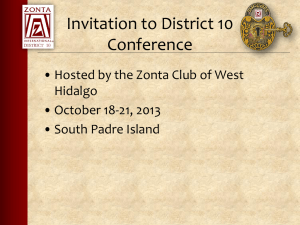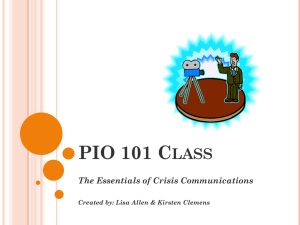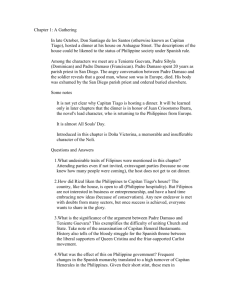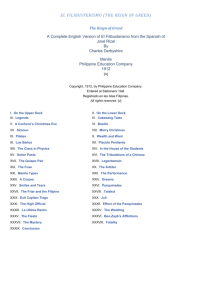Conte_final
advertisement
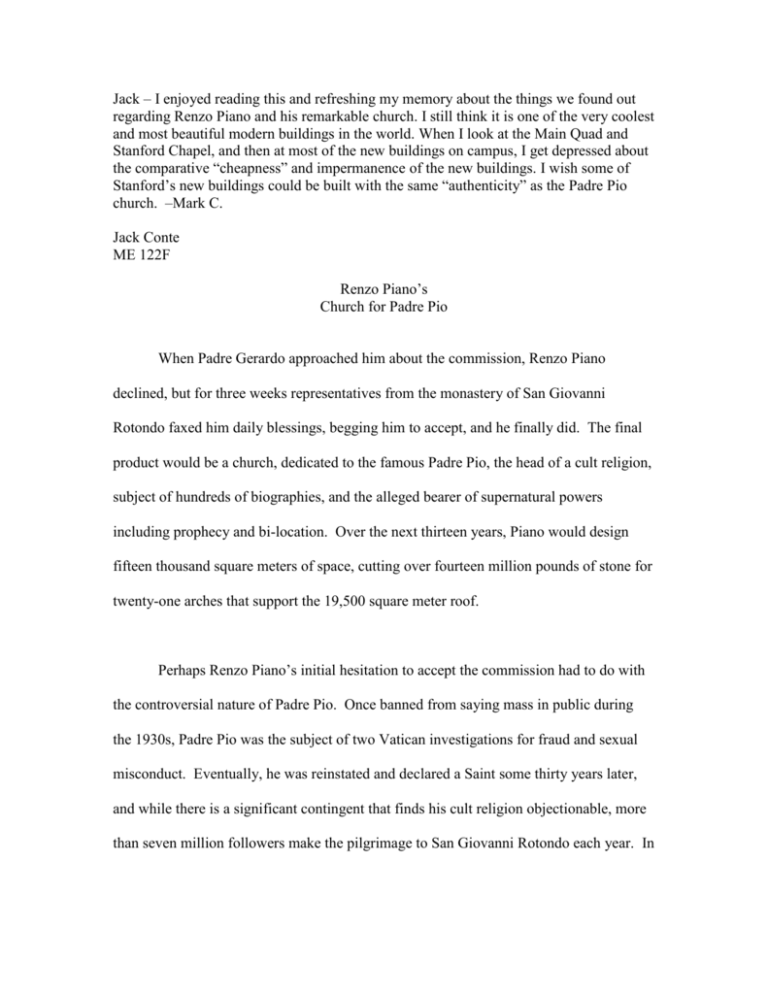
Jack – I enjoyed reading this and refreshing my memory about the things we found out regarding Renzo Piano and his remarkable church. I still think it is one of the very coolest and most beautiful modern buildings in the world. When I look at the Main Quad and Stanford Chapel, and then at most of the new buildings on campus, I get depressed about the comparative “cheapness” and impermanence of the new buildings. I wish some of Stanford’s new buildings could be built with the same “authenticity” as the Padre Pio church. –Mark C. Jack Conte ME 122F Renzo Piano’s Church for Padre Pio When Padre Gerardo approached him about the commission, Renzo Piano declined, but for three weeks representatives from the monastery of San Giovanni Rotondo faxed him daily blessings, begging him to accept, and he finally did. The final product would be a church, dedicated to the famous Padre Pio, the head of a cult religion, subject of hundreds of biographies, and the alleged bearer of supernatural powers including prophecy and bi-location. Over the next thirteen years, Piano would design fifteen thousand square meters of space, cutting over fourteen million pounds of stone for twenty-one arches that support the 19,500 square meter roof. Perhaps Renzo Piano’s initial hesitation to accept the commission had to do with the controversial nature of Padre Pio. Once banned from saying mass in public during the 1930s, Padre Pio was the subject of two Vatican investigations for fraud and sexual misconduct. Eventually, he was reinstated and declared a Saint some thirty years later, and while there is a significant contingent that finds his cult religion objectionable, more than seven million followers make the pilgrimage to San Giovanni Rotondo each year. In fact, the entire ten-year Padre Pio Church design and construction process was financed completely by contributions from worshipers. Piano arrived at the site of the commission, as he usually does, to walk around, soak in the atmosphere, and find the “spiritu del posto,” the spirit of the site. He found nothing but rock. San Giovanni Rotondo lies in the middle of a desert valley, and Piano quickly found himself with little inspiration. However, because rock was evidently the theme of the location, Piano decided to construct the entire church from Bronzetto di Apricena, a local limestone with a relatively homogeneous beige color. Piano said he had a “desire to find out what can be done with stone today, almost 1,000 years after the Gothic cathedrals were built. Technical virtuosity is not an end itself, but meets the needs of a precise formal choice. The church at San Giovanni Rotondo springs out of the stone of the mountainside. Walls, supporting arches, and the roof will all be made of stone. We have deliberately insisted on a single material as the expressive key to the design” (http://www.guardian.co.uk/arts/features/story/0,,801421,00.html).1 The compressive strength of Bronzetto di Apricena is higher than that of most other stones in the region, and the bending strength is also remarkably high, making it an ideal stone for monumental construction. 1 Image from http://194.185.232.3/works/050/pictures.asp According to Ambrogio Risari, an Italian architect based in Milan and familiar with the Padre Pio project,the birth of a project is a creative, collaborative process between the commissioners, the architectural team, and their pencils. “You think with a pencil,” says Risari, and the only way to truly visualize the details of a dream is to draw it.2 After a week of thinking and drawing, the architect presents a series of sketches and ideas to the commissioners, and the primitive plans go through several revisions before the main ideas are finalized. After the major decisions about the form and style of the building are made, teams of specialists are called in to deal with the specific mechanical questions at hand. For the Padre Pio monument, a team of engineers who specialized in stone, specifically Bronzetto di Apricena, was called to manage the technical aspects of the stone building. Digital models of the monument were constructed to analyze the structural aspects of the building, and physical were made to visualize its layout and presentation. Each stone, many of which weighed an impressive 7 tons, was precision cut and tested with ultrasonic tools to measure its structural integrity before having holes drilled through the 2 Image from http://194.185.232.3/works/050/pictures.asp length of the stone to make room for steel cables. Five or six stones, depending on the size of the arch being constructed, were resin-glued together, with holes aligned using laser instruments, and the steel cables were threaded through and stretched to create precompression.3 Metal plates were then attached to either end of the stone section, which connect to the metal struts that run to the roof. The arches were assembled section by section, using a series of powerful cranes that held each piece in place until the arch was self-supporting. The twenty-one arches continually decrease in radius, creating a snail-shell-like spiral around a common center. Because each arch is different, each five-block section of stone had to be carefully designed and formed to maximize the stability of the arch. Thus no two sections of stone are alike, and each section was carefully cut to be the perfect size and shape. The resulting roofed structure holds six thousand people, and the surrounding stone courtyard holds another thirty thousand; the eight enormous bells and almost forty meter cross aligned with the dome’s entrance make the church a clear landmark that will attract millions each year. 3 Image from http://www.arcspace.com/architects/piano/padre_pio/padre_pio.html References 1. Renzo Piano’s official website with pictures, digital structural drawings and more: http://194.185.232.3/works/050/index.asp 2. Marble Art Culture for specific structural details: http://www.marmomacc.com/MarmoArteCultura/template_en.asp?sezione=work&pagina =piano 3. Interview with Ambrogio Risari, architect, May 28th, 2005. 4. Arc Space has some large color pictures of models and drawings: http://www.arcspace.com/architects/piano/padre_pio/padre_pio.html 5. Guardian Unlimited has some good information on Padre Pio himself and information on the church, as well: http://www.guardian.co.uk/arts/features/story/0,,801421,00.html


